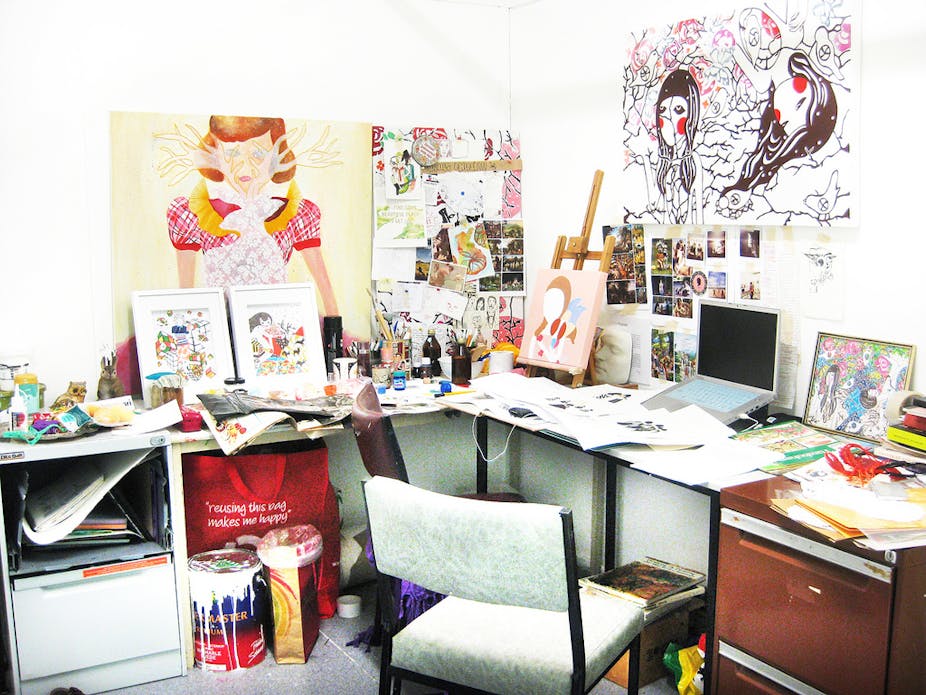The Victorian state government has set up a Creative Industries Taskforce that will, as the media release explains, “steer the future of Victoria’s A$22.7 billion creative industries”.
At least they didn’t say “plan the future”. And somehow Victoria’s creative industries are now bigger than Australia’s creative industries. But hubris and mathematics aside, more worrying for those of us who get nervous when industry insiders are invited to make recommendations to politicians about what the inside of the (mostly private sector) industry should look like, is that the Taskforce seems to be mostly made up of high-ranking industry insiders, many on government sinecure.
But I’ll let that go too – the expert reference group (that includes Nicholas Gruen and Marcus Westbury) looks a lot grittier and should keep things reasonably honest.
Rather, what is most interesting about the Taskforce is the level at which it occurs – namely that it is prosecuting creative industries policy at the level of the state rather than federally.
This is apropos of two things: first, this is a retreaded version of the federal Labor Party Creative Industries policy that was subsequently dumped by the incoming Abbott government.
And second, it coincides with the old Arts Victoria portfolio being junked and rolled into a broader creative industries focused super-portfolio called Creative Victoria. Let me suggest this is all a good idea if combined with a third imperative – namely, to abolish federal income taxes entirely and replace these with state income taxes.
So why is it better for all Australians (and not just Victorians) if creative arts policy (and income taxes) are done at the state rather than federal level? The reason is an economic model developed by Charles Tiebout in 1956.
Tiebout wondered whether there could be market rather than political solutions to the problem of efficient provision of public goods.
Government spending on arts, culture and creative industries is a public good that mostly benefits those who live in the region in which it is produced. If it is also paid for at that level with state-based taxes then each jurisdiction can propose its own level of public provision and taxes, and then Australian citizens (including creative producers) can sort themselves over the different state offerings based on their preferences and willingness to pay.
This is called “voting with your feet”, and it harnesses the mechanism of competition between states (called competitive federalism) to arrive at an overall efficient level of creative arts policy spending and taxes.
But for this to work, spending needs to be connected to the ability to raise revenue, which could best be met by shifting the income tax to the states. So state-based creative industries policy needs to be connected to a state-based funding model.
A second theme I want to consider here is this: what should the Taskforce be doing? This question obviously directs us to different terrain than whether arts spending should be within the remit of federal or state governments. The problem with insider panels, even very smart and illustrious ones – as is manifestly the case here – is that you tend get recommendations that don’t stray far from calls for more funding to basically do what is already being done, but better.
This is of course not unexpected when those receiving the benefit are disconnected from those paying the costs, and when advice is drawn from those seeking to do things they already do, but that require more funding.
What, then, might an “outsider” panel suggest? The new economics of innovation and economic growth can offer some suggestions here. Economists have increasingly realised that a major barrier to industry development is detailed, timely local information about the cost and demand conditions associated with new ideas.
Entrepreneurs need this information to figure out whether there is an opportunity to invest, or not. Whoever goes first incurs the cost of the experiment, but if successful whoever goes second can copy the model without incurring the cost.
The result is market failure in investing in going first, and thus too few new avenues for industry development.
The basic suggestion, then, is support for entrepreneurial experiments – what in technology and industry sectors would be called R&D, and what in entrepreneurial studies is called “opportunity discovery”. The UK’s Nesta provides a good model of this in relation to R&D in the digital arts.
So rather than seeking funding to do things that are already being done, but that people don’t seem to want to pay for (i.e. the market failure justification), perhaps the Taskforce might seek to propose a model to experimentally generate useful information that can be used by Victoria’s arts and cultural entrepreneurs to evaluate opportunities that may then be privately developed.
The panel will deliver its report in October. Here’s hoping it’s not just a call for more funding for more of the same.

